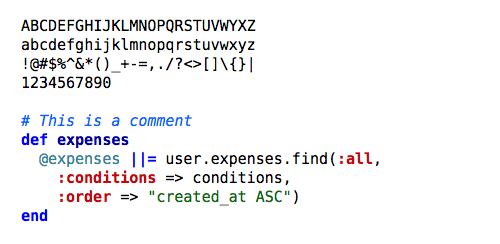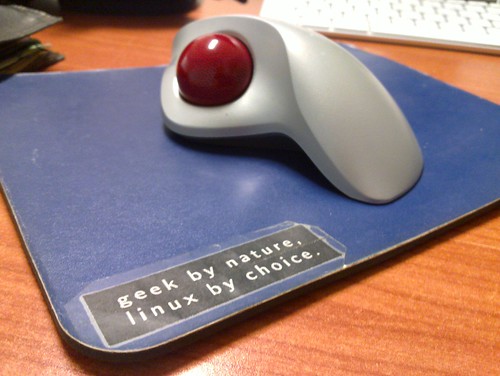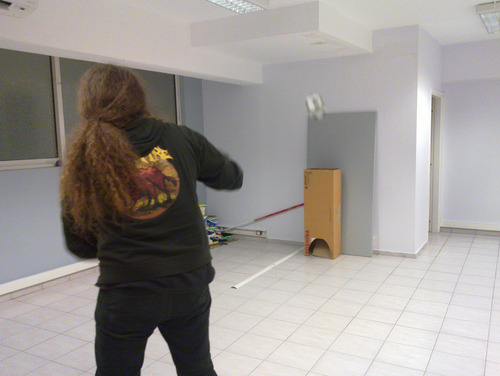Tag archive: Text
-
She
A poem about that girl I met yesterday.
...she had an unusual calmness around her. One, that everyone strives for. The calmness of a floating kite. That character of a river. Calmness which, monks attain through divine realisation, and turtles gain, perhaps, through years of watching genera- tions pass by. I found it soothing like a river; So tender, yet extremely captivating. Her low voice, quiet smile, all had an excep- tional gracefulness to it. I never told her all this; Actually, I couldn’t. And today I think, some things are just meant not to be conveyed; They are meant to become memories, and we are suppose to cherish them for the eternity.
-
Setting up Network Photo Scanning
I spent around 30 minutes setting up our office printer/scanner/fax machine on Linux. While there's been a lot of work in the CUPS world for setting up things automatically, scanning didn't particularly work out-of-the-box.
Here's what I remember needing to do to get scanning work on this networked all-in-one machine setup to scan.
Setup necessary packages:
sudo yum -y install xsane sane-backends sane-frontends # Actual drivers: sudo yum -y install libsane-hpaio # Front-ends: sudo yum -y install hplip-gui simple-scan xsane-gimpSetup machine to have a static IP for future easy reference (192.168.1.50 in my case). This can be done using the machine menus. Once you know this IP, you can play around with the settings from your computer by pointing your browser to that IP address.
At this point, theoretically one can fire up
hp-toolboxand add the printer & scanner from there, by adding a network printer and filling in the IP. But this tool died on me with a message "Restart CUPS". So, here's the workaround I did:# Create HP URIs: hp-makeuri -g 192.168.1.50 # Test temporarily: xsane hpaio:/net/Officejet_6500_E709a?ip=192.168.1.50To setup the device permanently and the SANE backend to always discover it, the following did the trick (notice the prefix
hp:/):sudo vi /etc/cups/printers.conf [Change DeviceURI to `hp:/net/Officejet_6500_E709a?ip=192.168.1.50`]To scan, fire up
simple-scan, orxsane, or from GIMP, choose File→Create→XSane.Finally, it's worth noting that flegita, the GNOME scanning tool, simply crashes.
-
Creepy introduction #2
"Hi Dimitris. I was wondering whether you work on proton exchange membrane fuel cells, as I'd like to ask a few questions."
This introduction/message came on my Facebook account. At first I thought it was a joke, but such things do exist.

-
Rock climbing inspirations
What inspires people to go for rock climbing? Stuff like this:

(via 8a.nu)
-
Treating deep cuts
Tip of the day: For deep cuts, add a stronger disinfectant (hydrogen peroxide-like) on top of Betadine; better against anaerobic microbes (via @vickykorvesi).
-
Favorite fonts for programming
What are your favorite fonts for code editing? Mine are DejaVu Sans Mono (Vera-based) and Droid Sans Mono (Google).
Inconsolata is very good (and free) but I can't seem to get sub-pixel anti-aliasing with it (only normal one, which at <10px gets blurry). And Envy Code R is just too condensed.

-
Geek by nature, Linux by choice
This weekend @andy_lupo and me will head north to Thessaloniki to present at the FOSS-Communities Conference some of the kewl technologies we're using at Indifex. Andreas' talk is titled "Multi-GB databases with NoSQL" and mine "Extreme Web Programming".
Additionally, I was humbled to be invited from the local entrepreneur's club OpenCoffee to present at their weekend event. I'll talk about open-source business models and the lessons learned while building Indifex. The talk is titled "Transifex: Developing Open Source Software for fun and profit".
So looking forward to this trip. I hope the weather is nice on Friday evening!

-
Do you monetize your international traffic?
Did you know that ~80% of the traffic on Google, Facebook and Twitter come from outside of the US?
Fred Wilson (avc.com) has written an insightful blog post titled "Does Rest Of World Matter More Than The US?". Fred believes that localization is key to monetize outside of the US:
The web sector needs to start working harder on international monetization. [...] Web services that are highly international today should invest in fully localizing their user experience and then start thinking about monetizing outside of the US.
This is the reason d'etre of web services like Transifex: the vast majority of international speakers, who can stay on your website twice as much and have 4x more chances of buying something, if your website speaks their native language.
Of course the US traffic can achieve (much) higher monetization than other countries in most industries, but the monetization does follow the high numbers of international visitors:
Even if international traffic could only be monetized 25% as well as US traffic, when your international traffic is 80% of your total traffic, you would make as much money internationally as domestically. So that's a lot of potential out there to be tapped.
An interesting comment was made by daveclark, mentioning that the cost of winning a local market shouldn't be underestimated. Businesses which 'inherently scale friction-free across markets' should 'game on', while others might need much more work than just localizing the user interface (think, for example, selling shoes or books). Lots of good comments on the article.
-
Mercurial rebase and merges
Epiphany!
The past days I learned great things today about Mercurial.
-
I found out Joel Spolsky's hginit.com. It teaches you the key concepts behind hg in a way which doesn't mess with complex internals, but focuses on what's important: the user experience.
-
I found out that the latest version of the hgtk history window supports running an 'Outgoing' command, which directly marks the nodes which will be pushed.
-
I noticed that sometimes when I rebase, I get a merged head node instead of a linear history. That is, the rebase doesn't work 100%. Not sure why this was happening, but I found a few hackish workarounds. The funny thing is that I also found a solution: I then rebased the branche's root node on top of the merged node.
I now understand that the problem was much simpler: I just run accidentally hg rebase with
--sourceinstead of--branch. The first flag rebases a single node and the latter a whole branch. So, obviously, only the last node was "rebased" to look on top of tip. Instead, when you rebase with--branch, the branche's base node is rebased, and the history is, of course, linearized.Success.
 (The Beast playing some hoops at the office.)
(The Beast playing some hoops at the office.)-
-
ack
ack rocks. It's like grep, but you can also ignore
.svn-like dirs and backup files (foo~, foo#), specify file types to search, color highlighting. Sweet! Http://betterthangrep.com/
-
Tumblin!
Giving Tumblr a run. Looks slick so far!
</p>
